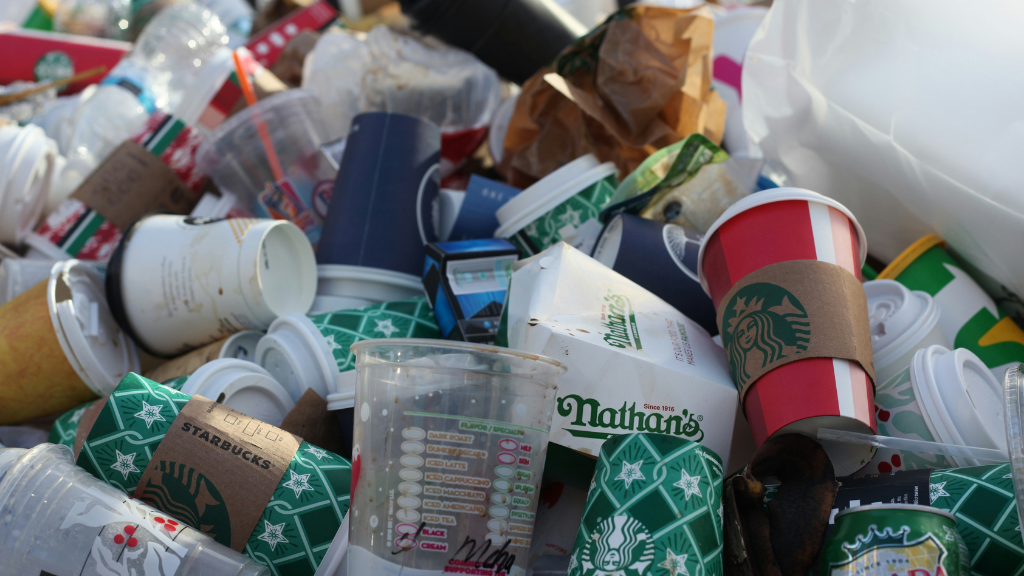China's Shuttered End-Markets gives North America motivation to open new doors
CPIA’s Online plastics markets reporting tool already revealing valuable data about stranded tonnes and potential alternative markets for recovered plastics

When China closed its doors to scrap commodity materials, including recovered plastics, because of unacceptable levels of "carried waste", it set many countries around the globe that ship post-consumer materials to China on their heels.
And, like a whack-a-mole game, the pain kept popping up. Even before the end of last year, alternative markets in South Asia and in many countries stopped accepting imports, as redirected shipments from Europe and North America overflowed domestic and global capacity to process plastics and other materials. Many recycling collection programs in North America were left with stranded tonnes. So, what now?
At the Canadian Plastics Industry Association (CPIA), we set out to get a handle on how much recovered plastic is jammed in the pipeline, stored or worse, disposed of in landfill. To collect data, we created a voluntary Online Plastics Markets Reporting Tool. In an easy-to-use format, we encouraged Canadian processors and brokers to record total tonnes of stranded plastics. Individual entries are completely confidential. Our intention is to aggregate the information and compile data on the types of plastic resins and total number of tonnes that collectors haven't been able to move. We will use the information to shop for potential end-markets that need significant tonnage to grow new plastic processing capacity.
What has the reporting tool and our discussions revealed so far?
First, for many Canadian collectors/recyclers and brokers, the shrinking overseas markets are actually not disrupting business as usual for two main reasons.
The first reason is that because many Canadian recyclers have traditionally produced high quality plastic bales that meet or exceed industry specifications, the "China situation" has caused little or no problem. Recovered commodities from these programs continue to be shipped to existing markets.
The second reason is that many Canadian recycling processors have cultivated domestic end-markets early in their planning, and have remained loyal to them, even when overseas spot markets raised prices by a few dollars a tonne. By assuring their domestic end-markets a stable supply of quality feedstock over the long haul, their end-markets remain available to them now. Stable supplies have allowed plastic processors to invest in new capacity and technology to meet the high-quality demands of domestic manufacturers who have a choice of virgin and recycled plastic feedstocks.
According to a study by U.S.-based Moore Recycling Associates, about 80 percent of plastics recovered in Canada's residential recycling programs goes to end-markets in North America; only about 20 percent has been shipped to Chinese or other offshore end-markets.
Indications suggest that across the country, processors in British Columbia, Saskatchewan, Manitoba, Ontario and Quebec may be challenged, but are moving their plastic materials, particularly where adjustments to quality control have been made to better meet end-market specifications.
More serious issues with respect to marketing materials have surfaced in Alberta and the Maritimes where the Chinese ban on scrap waste is impacting mixed rigid plastics, numbers 1 to 7, and low and high-density polyethylene #2 film, generally used for plastic bags and overwrap. In those locations, the stranded materials are being shipped to available markets where quality and capacity permits, stored, used for fuel in cement kilns or, regrettably, some has been landfilled.
Unfortunately, it would appear other global jurisdictions that have shipped a greater percentage of their plastics to China are in a more serious struggle, with fewer options.
Everyone agrees the China situation has been a "wake-up call" which has sparked talk of reestablishing end-market capacity in North America. That's an important and logical step that needs immediate action, because creating new domestic capacity takes time to plan and build. A vital driver will be incentives from governments, industry and funding organizations like the Closed Loop Fund.
But there are other pieces in this puzzle that need discussion, in tandem with the need to build market infrastructure. For example, better quality material. The problem that "carried waste" caused for China cannot be transferred to our homegrown solutions. A good start is adopting measures, including slowing down lines in material recycling facilities, increasing manual "quality checks and sorts" to clean incoming materials more effectively, and investing in sorting technology. Add to that the need for more effective promotion and education programs to improve the quality of recyclables, beginning at the curb, depot or other recovery points.
We'll also need to look ahead at developing markets for the newly processed resin pellets and flakes generated by any new processing capacity. The past has seen the lion's share of manufacturing depart North America in favour of lower wage economies. Encouraging a "Made-in-Canada" and even a "Made-in-North-America" reinvestment in our manufacturing industry is a topic worthy of discussion. Along with it, we need procurement policies that stimulate and expand demand for post-consumer plastics. This is one area where voluntary industry and producer responsibility programs, depending on the local preferences of various jurisdictions, can push this agenda forward, fuelling our transition to a low carbon, sustainable economy.
And while we're talking about how to regain control of our industry's future, we might examine how advanced engineering technology can improve our ability to manage used plastic resources. We are no longer limited by the bottle-to-bottle and cap-to-cap confines of recycling. It's now possible to deconstruct plastic resins to their base molecular components and to reconstruct them into entirely different and new plastic resins. This exciting, emerging technology can expand markets for used plastic resources beyond conventional processing technologies, enhancing our ability to recycle a greater range of plastics domestically.
These opportunities hold the promise of putting challenges, like "China", behind us. And they hold the promise of helping all of us benefit from a more sustainable economy and environment at home.
Joe Hruska is VP Sustainability, Canadian Plastics Industry Association. This article was originally published in Recycling Product News, March 2018, Volume 26, Number 2.
Company info
5955 Airport Road, Suite 125
Mississauga, ON
CA, L4V 1R9
Website:
plastics.ca/home/index.php



